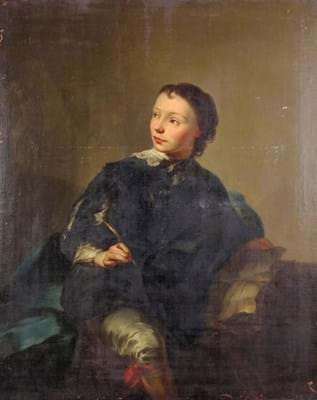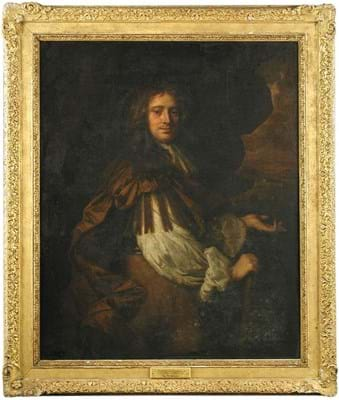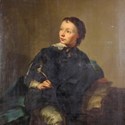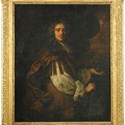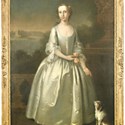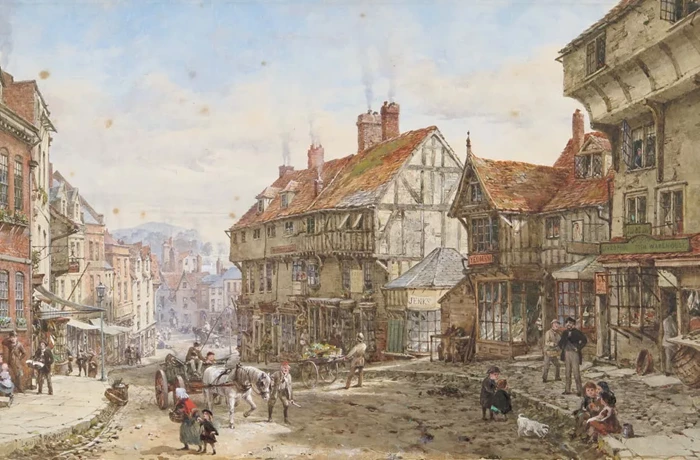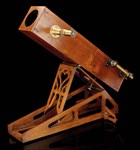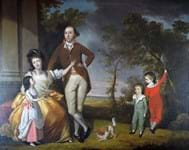“Over the last five to 10 years we’ve been a bit wary of these traditional sales because the middle market hasn’t been brilliant. But we noticed in March there was an uplift and it seems to have carried on.”
It may be short-lived, said Fauvelle, but it is encouraging news for a sector that has struggled over the last two decades to keep pace with the popularity and demand for more modern art.
The latest sale on September 12 ran to more than 580 lots and pulled in £450,000, well over the low estimate, with 77% finding buyers. British and Continental portraits and landscapes, even watercolours (an area which has softened over a long period), attracted noticeably more competition than in previous years.
“I think people are now starting to realise that if you don’t over-furnish, you can get a modern look with traditional pictures. If you think of the work that has gone into them, they are also very reasonable,” said Fauvelle.
A desire to own a work which has more meaning and academic substance than modern art, may also be behind this return to the traditional, he added.
Little Barford cache
Sarah Flynn, head of paintings at Cheffins (22.5% buyer’s premium), was also optimistic about the middle market after her sale achieved strong results for a group of over 30 portraits from Little Barford Manor, a near-derelict property on the Alington Estate in Bedfordshire (also see Auction Reports).
“The unforeseen success of this collection of 16th and 17th century paintings goes to show that pictures from this era can still make strong prices at auction,” she said.
“Some of these pictures had suffered from neglect and are in need of restoration. However, their provenance and quality still drew in buyers from both the UK and overseas. Some of the art from the Alington Estate hadn’t been seen for over 300 years and represented exactly what buyers want – interesting pictures which are new to the market.”
Rayner’s lane
The upward trend in traditional pictures was encapsulated in the performance of a quintessential Louise Rayner (1832-1924) watercolour at Woolley & Wallis.
Executed in the artist’s typical detailed style, it shows a Victorian view of the famous Shrewsbury street, Wyle Cop. The 12 x 18in (30 x 46cm) work, which had some foxing in the sky, bettered its guide of £6000-8000 to sell to a trade buyer at £11,000.
“It was an encouraging price,” said Fauvelle. “I think the result is an indicator that people are beginning to wake up to the fact that these sorts of things are very rare; there are not many of Rayner’s works around.”
According to the Art Sales Index, only around a dozen of the artist’s Shrewsbury views have sold at auction since 1984. The most expensive also depicted Wyle Cop, which sold at Bonhams back in 2005 for £15,000.
Catering to scholarly tastes was a consignment of more than 50 icons and religious pictures from the collection of the late Dr Venetia Newall, a former president of the Folklore Society in London.
Estimated at £200-300, but soaring to a sale-topping £39,000, was a painting of Mary Magdalene holding an urn of myrrh, catalogued as 19th century Continental School.
Painted in a 6½ x 5in (16 x 13cm) tabernacle frame, it had previously been attributed and still bore a label to the frame for Lo Spagna (1450-1528), the Spanish painter active in central Italy during the High Renaissance. It had a strong provenance, having previously sold at Sotheby’s in 1946 and been exhibited at the vast Art Treasures exhibition in Manchester in 1857.
But the result was perplexing for Fauvelle: “Even if it was by Lo Spagna, it is a very strong price. He doesn’t seem to make that kind of money for a picture on that scale.”
Elsewhere, an Italian dealer took a punt on a portrait of a boy, holding a pen and book and wearing a blue coat, which had passed by descent from the collection of the 18th century Irish timber and glass merchant Cooper Penrose.
Catalogued as an 18th century Northern European portrait and estimated at £1000-1500, the 4ft 1in x 3ft 4in (1.24 x 1.02m) oil on canvas drew bids from eight phones before the dealer secured it at £26,000. The picture is now thought to be by an as-yet unidentified Italian artist.
The Penrose collection was smattered with other moments of strong bidding, including a multi-estimate £7000 from a different Italian buyer for a 17th century Danish portrait of a lady with a lace-making pillow attributed to Bernhard Keil (1624-87).
Elsewhere in the sale, an oil landscape by Paul Sandby (1731-1809), which had not been to auction since 1989, sold within estimate at £9000 to a private buyer while a large and possibly unfinished 19th century costume scene depicting the trial of Charles I by Polish-French genre painter Ladislaus Bakalowicz (1833-1904) took a punchy £7000 from a Polish buyer, against a £1500-2500 estimate.
Lely’s Constable
Portraits were Cheffins’ area of strength in its sale on September 13-14, helped along by the bumper consignment from Little Barford.
The property, left empty for over 20 years, had been home to an array of portraits of members of the Alington family and their immediate relations. Over 30 went under the hammer dating from the 16th to 19th centuries – the vast majority getting away to total over £90,000.
The stars were a pair of previously undocumented 17th century portraits by Peter Lely (1618-80) and his studio, which had been verified by Catherine MacLeod, a specialist on Lely at the National Portrait Gallery. The c.1675, 4ft x 3ft 3in (1.22 x 99cm) oil on canvases depict William Alington, 3rd Lord Alington, MP for Cambridge and Constable of the Tower of London, and his third wife, Lady Diana Alington.
Although they presented a restoration challenge (both were very dirty, with mould in places, and covered in a yellowing varnish), the portraits were snapped up by a UK private buyer at £24,000, against a £12,000-18,000 estimate.
But the keenest interest among the Alington portraits was reserved for a portrait of a man, possibly a monk, catalogued as by a 17th century follower of the famous Spanish painter, Jusepa de Ribera (1591-1652). Believed to have been acquired in Italy by the family c.1850s, the 2ft 4in x 2ft (71 x 61cm) oil on canvas soared to £16,000 against a £3000-5000 estimate.
Consigned from a Norfolk country house was a grand Scottish portrait of a lady with her dog by William Denune (c.1710-50).
Thought to be one of the better pictures by the artist, the sizeable 5ft 2in x 3ft 7in (1.57 x 1.09m) oil on canvas possibly depicts a member of the Lawson family, with a building identified as Neidpath Castle near Peebles, painted in the background. It sold for £17,000 against its guide price of £3000-5000 to a buyer in Scotland.


